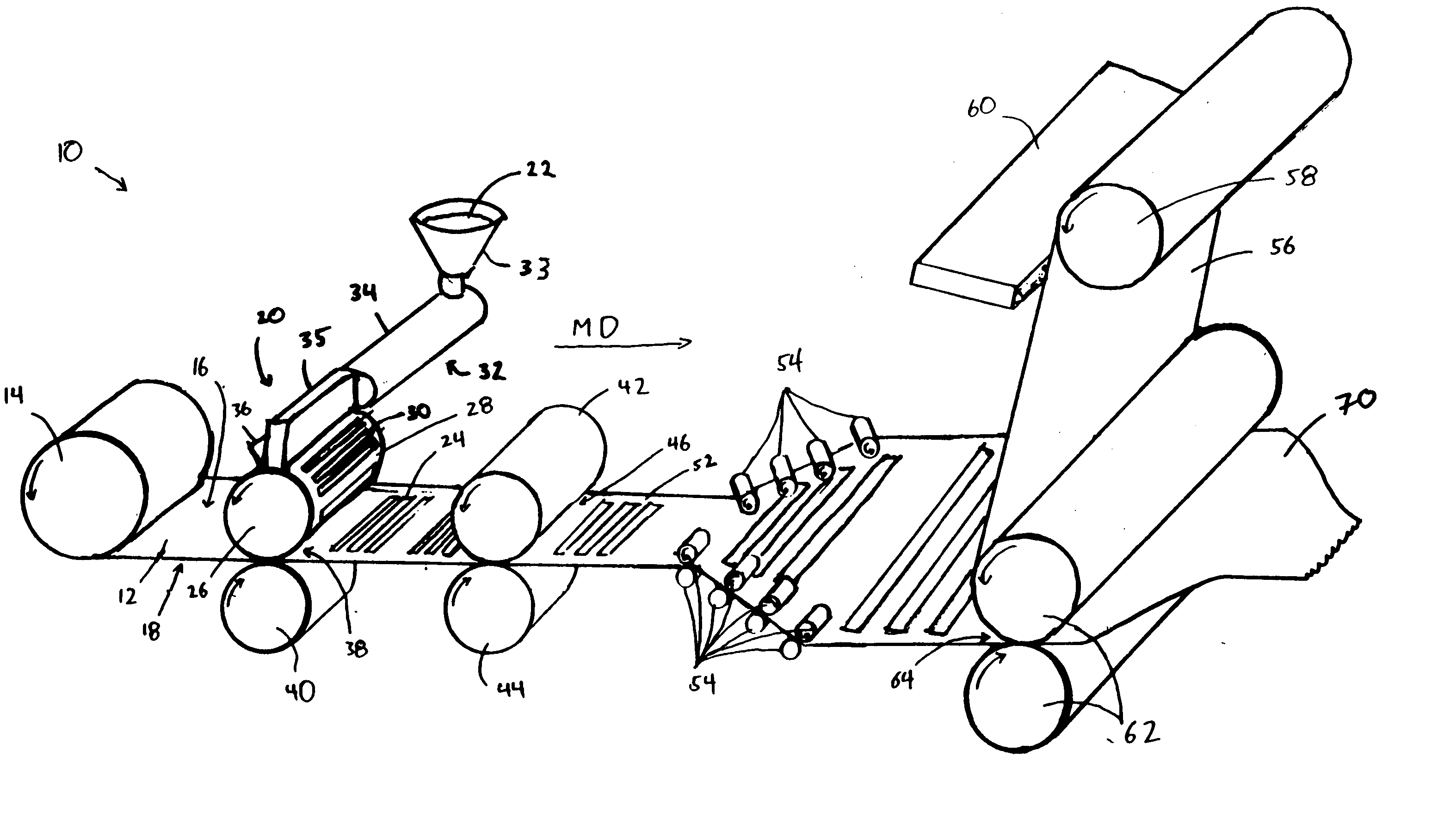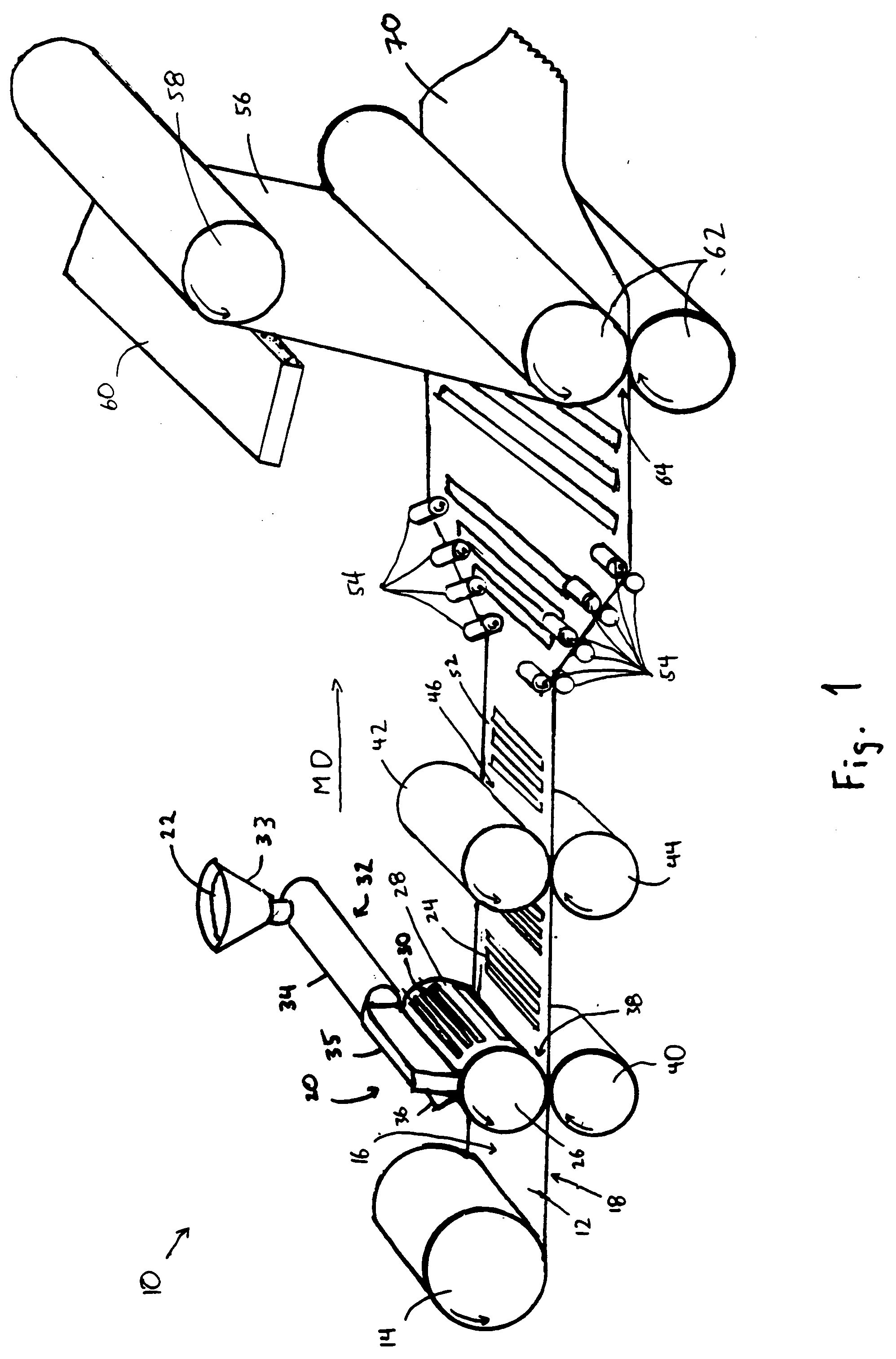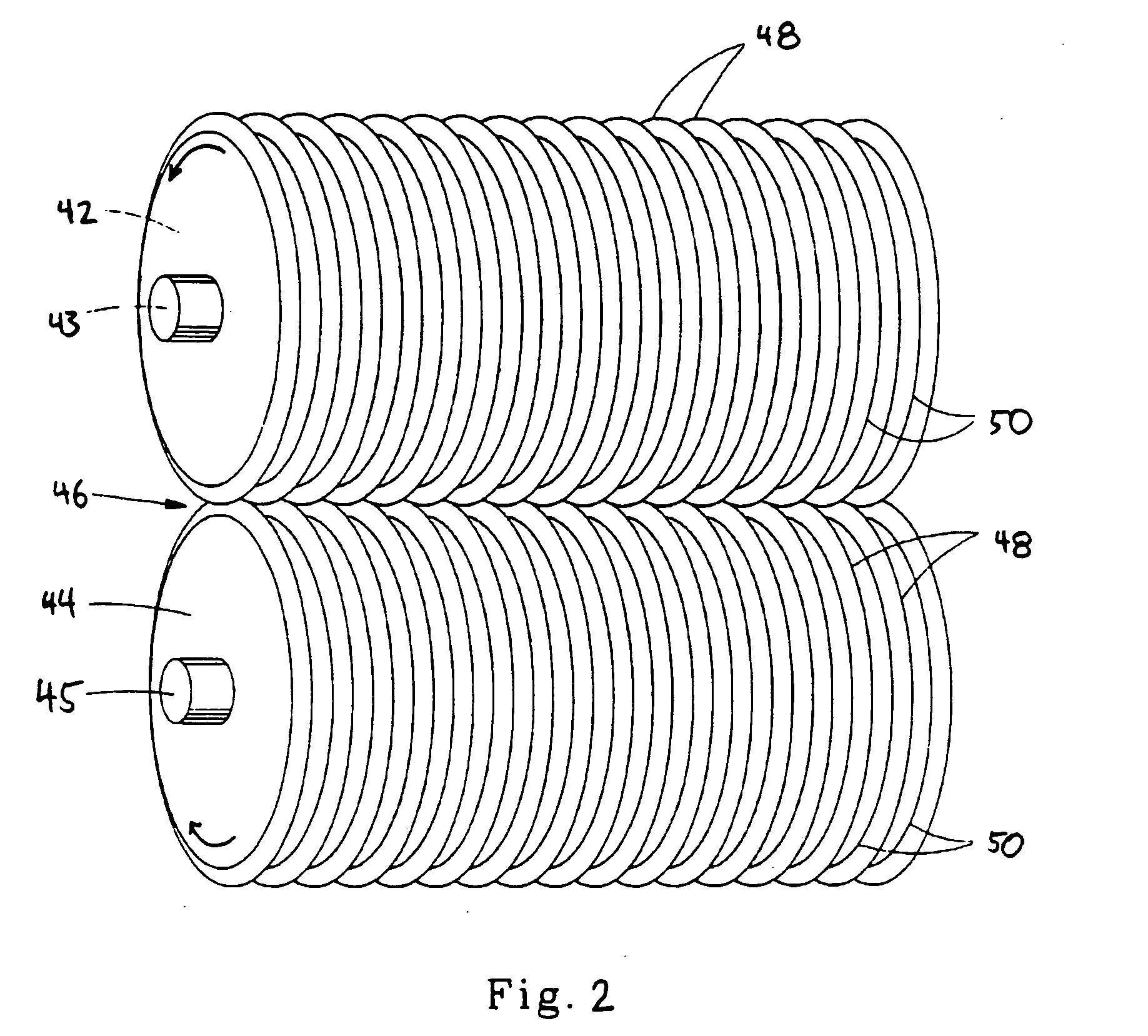Method for producing a corrugated stretch laminate
a technology of corrugated stretch and laminate, which is applied in the directions of adhesive processes with surface pretreatment, transportation and packaging, bandages, etc., can solve the problems of increasing drag on the skin surface, uniform and unidirectional stretch, and relatively expensive elastomeric materials
- Summary
- Abstract
- Description
- Claims
- Application Information
AI Technical Summary
Problems solved by technology
Method used
Image
Examples
examples
[0092] A suitable elastomeric composition may be prepared by blending varying amounts of a styrenic elastomeric copolymer such as Vector® 4211, a sytyrene-isoprene-styrene block copolymer (SIS) from Dexco Company, Houston, Tex.; Low Molecular Weight SIS (LMW S-I-S) from Dexco Company, Houston, Tex.; Septon® 4033, a styrene-ethylene-ethylene / propylene-styrene block copolymer (SEEPS), from Septon Company of America, Pasadena, Tex.; a vinylarene resin such as polystyrene PS3900 from Nova Chemical, Inc. Moon Township, Pa.; a macro photoinitiator from National Starch and Chemicals, Bridgewater, N.J.; and mineral oil such as Drakeol® available from Penreco, Houston, Tex.
[0093] The appropriate amount of each component by weight percent of the elastomeric composition is added into a twin-screw extruder for both compounding and printing. In another approach, the elastomeric composition is pre-compounded to form a single pellet material. GLS Corporation of McHenry, Ill. is a suitable compoun...
PUM
| Property | Measurement | Unit |
|---|---|---|
| melt viscosity | aaaaa | aaaaa |
| melt viscosity | aaaaa | aaaaa |
| weight percent | aaaaa | aaaaa |
Abstract
Description
Claims
Application Information
 Login to View More
Login to View More - R&D
- Intellectual Property
- Life Sciences
- Materials
- Tech Scout
- Unparalleled Data Quality
- Higher Quality Content
- 60% Fewer Hallucinations
Browse by: Latest US Patents, China's latest patents, Technical Efficacy Thesaurus, Application Domain, Technology Topic, Popular Technical Reports.
© 2025 PatSnap. All rights reserved.Legal|Privacy policy|Modern Slavery Act Transparency Statement|Sitemap|About US| Contact US: help@patsnap.com



